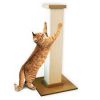Introduction Welcome to an exploration of an emerging societal trend. Our guide is Dr. Jane Doe, a seasoned sociologist with a keen interest in family dynamics and housing trends. With over two decades of experience, Dr. Doe brings a wealth of knowledge and a unique perspective to this discussion. The Rising Trend of Multi-generational Living
Introduction
Welcome to an exploration of an emerging societal trend. Our guide is Dr. Jane Doe, a seasoned sociologist with a keen interest in family dynamics and housing trends. With over two decades of experience, Dr. Doe brings a wealth of knowledge and a unique perspective to this discussion.
The Rising Trend of Multi-generational Living
In recent years, we’ve seen a significant shift in living arrangements within families. More and more, parents and their adult children are choosing to live under the same roof. This trend, known as multi-generational living, is reshaping our understanding of family dynamics and having a profound impact on the housing market.
The Societal Shifts Driving this Trend
Several factors contribute to the rise of multi-generational living. Economic pressures, such as the high cost of living and student loan debt, are certainly influential. But there’s more to it than just finances. Changing societal norms and values also play a role. For many, the close-knit family structure that multi-generational living provides is a source of comfort and support.

Image by: https://multiculturalcaregiving.net/
Impact on the Real Estate Market
This shift towards multi-generational living is leaving its mark on the real estate market. Housing designs are evolving to accommodate these living arrangements, with features like separate entrances and self-contained living units becoming more common. Real estate agents and housing market analysts need to understand this trend to effectively meet the changing needs of homebuyers.
Case Study: Multi-generational Living in Action
Consider the Smith family. After graduating college, their son, John, moved back home to save money and pay off his student loans. This arrangement has benefits for the whole family. John’s parents enjoy his company and the extra help around the house, while John appreciates the financial breathing room.
The Sociological Perspective
From a sociological standpoint, multi-generational living can strengthen family bonds and foster a sense of interconnectedness. However, it also presents challenges, such as navigating boundaries and maintaining privacy. It’s a complex dynamic that requires understanding and respect from all parties involved.
Future Predictions: The Long-term Impact
Looking ahead, it’s likely that multi-generational living will continue to shape our society and housing market. As we adapt to this new normal, we’ll need to rethink our definitions of family and home. It’s a fascinating journey, and one that we’re just beginning to understand.
Table: Key Points Summary
| Trend | Drivers | Impact on Real Estate | Sociological Perspective | Future Predictions |
|---|---|---|---|---|
| Rising prevalence of multi-generational living | Economic pressures, changing societal norms | Evolution of housing designs, changing needs of homebuyers | Strengthens family bonds, presents challenges | Likely to continue shaping society and housing market |




















